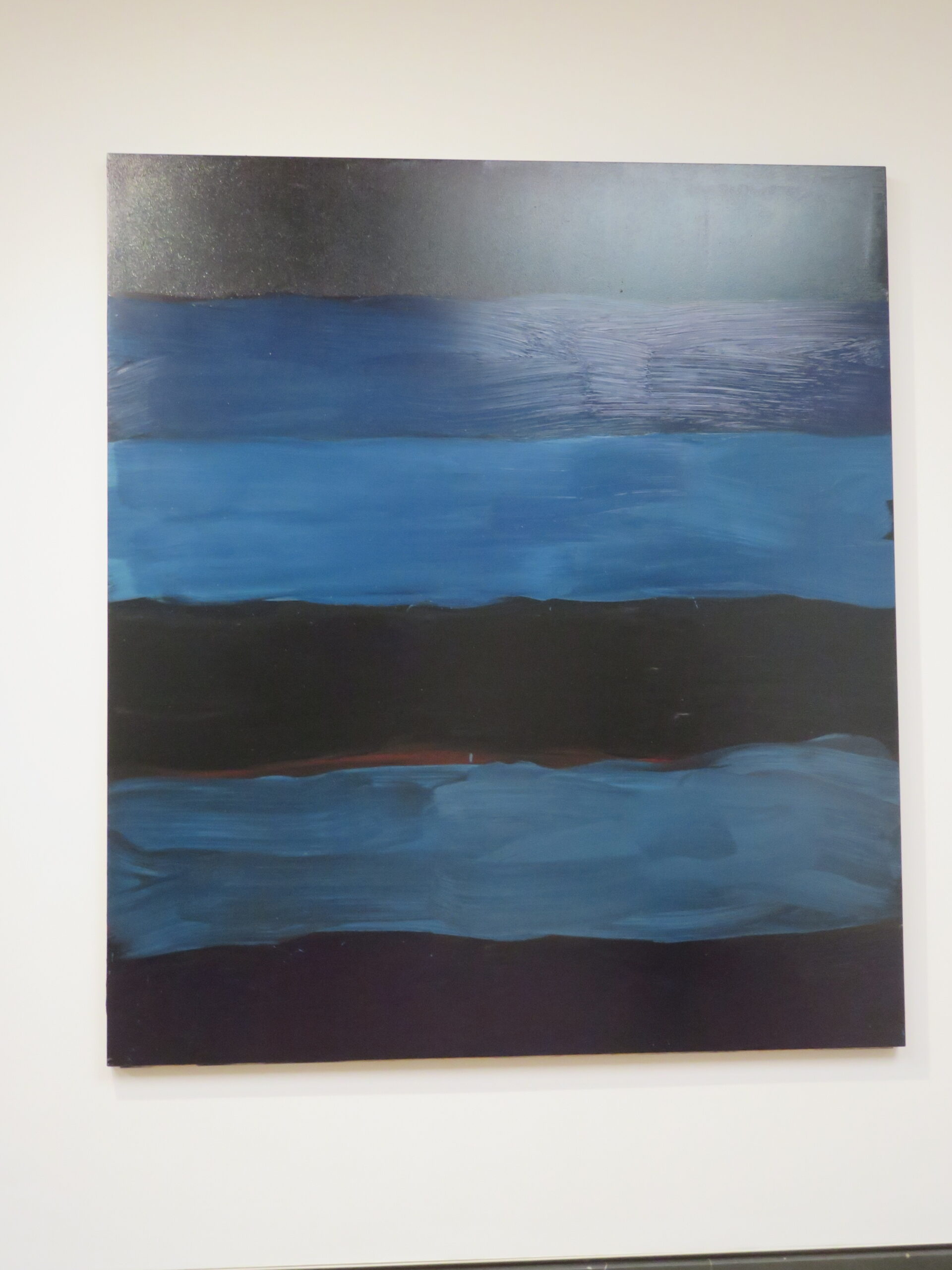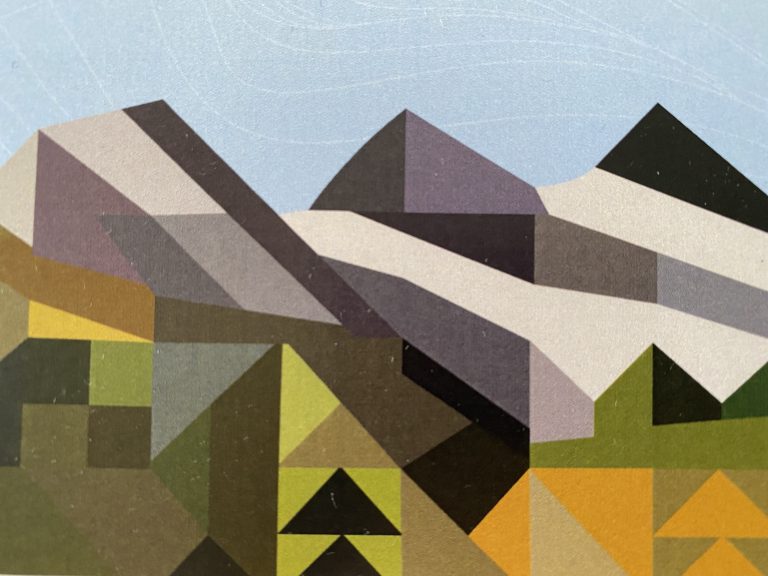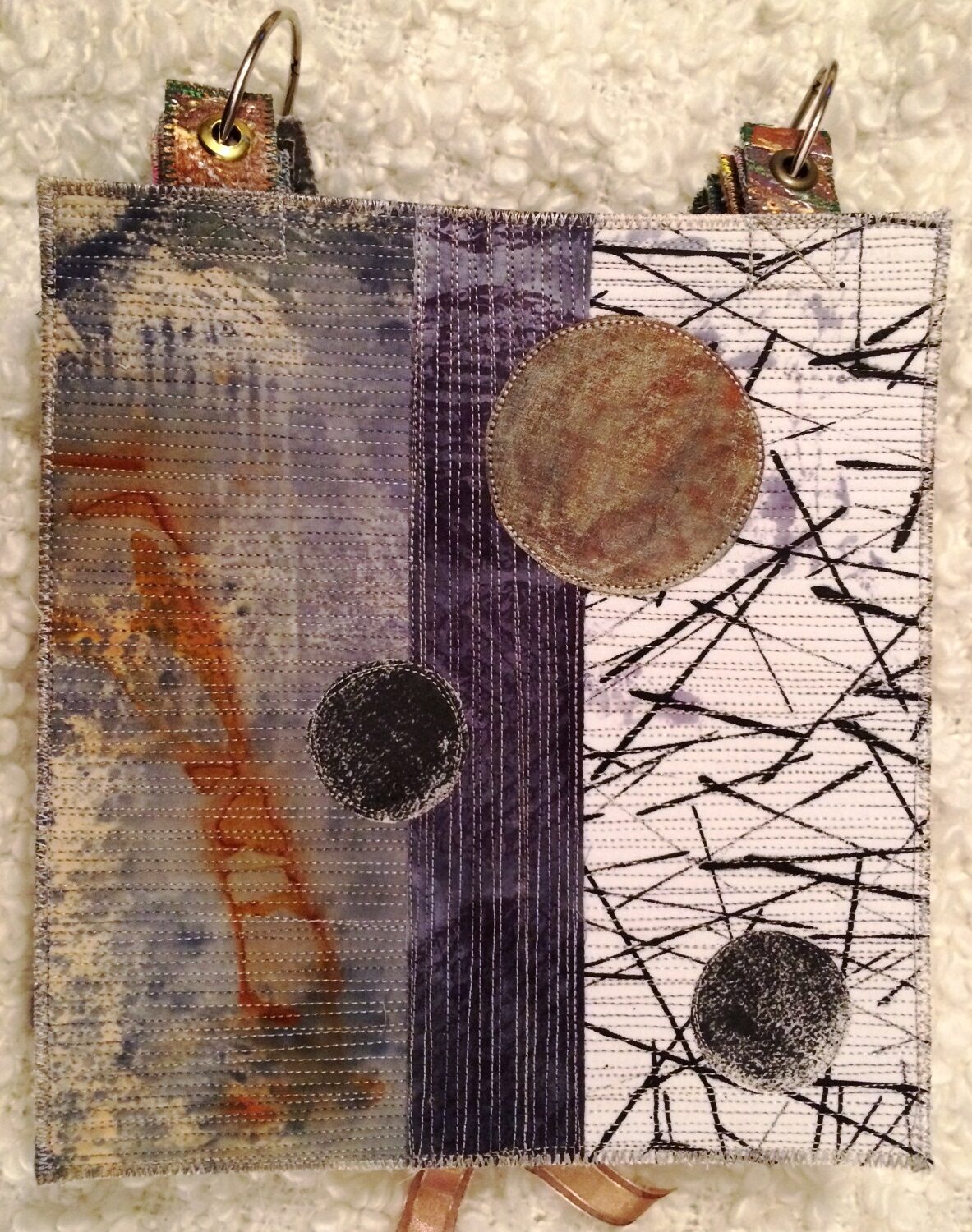The Art of the Stripe

As quilters and textile artists, most of us started – and are used to – sewing strips of fabrics together to create stripes that we then cut in different ways to create other designs. So it is no wonder that we are still sewing strips of fabric together. It seems to be the basis of patchwork and in its newer form, improv quilting. It is still sewing strips of fabric to form abstract and uneven designs, squares, rectangles and all manner of designs.
Why am I thinking about stripes? Because I was thinking about Inspiration, and of artists, painters, ceramicists, wood workers, jewelry makers, etc. that inspire and move. One of those artists for me, is Sean Scully. I had the honour and the pleasure of seeing some of his paintings in person in 2019 in London when, quite by chance, I turned a corner and walked into a room at the National Gallery. And there he was. I am not embarrassed to say that I stood in my tracks and a few seconds later had tears running down my cheeks. I spent some time standing in front of his paintings, trying to figure out what moved me so.
If you’ve never heard of Sean Scully, “he’s one of the most admired abstract artists working today. His distinctive paintings are built up in broad patterns of stripes, both vertical and horizontal. Each work uses a limited range of colours that evoke mood and movement, permanence and impermanence. In spite of his commitment to abstraction, Scully has always looked to the great figurative art of the past for ideas and inspiration” (from Sea Star – Sean Scully at the National Gallery).



“Stripe” an Old English word of Dutch or German origin, has been recorded since medieval times. Its definition as a noun is “a long straight region of a single colour” or “a welt, long scar, blow, probably from stripe band on a garment.”
Michael Pastoureau’s book “The Devil’s Cloth: A History of Stripes”, published in English translation in 2001, has provided fascinating information on “how this design developed, evolved or was transformed in the modern and contemporary era” (link to Pages, an independent bookstore in Calgary – or support your local independent bookstore). In medieval times, dressing in clothing regarded as inappropriate to one’s class or circle was regarded as a “sin of pride or a mark of debasement. It was a transgression against the social order and a cause for scandal.” This is what happened in the thirteenth century in Europe when some members of the Carmelite mendicant order arrived in Paris in 1254 wearing striped cloaks that differed from those worn by other mendicant orders, like the Dominicans and Franciscans.
It is speculated that the reason the Carmelites caused such offense was because their cloaks resembled the striped djellabas worn in Islamic countries, then as now. Although the scandal associated with the Carmelites is the best-known example of the prohibition on striped clothing, there are many others. Throughout the middle ages in Southern Europe, stripes were often required to be worn by prostitutes, jugglers, clowns and hangmen.
Beginning in the sixteenth century, the negative associations of the stripe began to diminish somewhat as it became a mark of domestic servitude. In Victorian England, the striped waistcoat became the attribute of butlers and valets. By the eighteenth century, an alternative and positive stripe began to emerge as an indicator of social rank. Such stripes were invariably vertical, as a sign of the aristocracy. Stripes received their strongest boost in the decade after the American Revolution. Stripes were everywhere: on flags, clothing and interior decoration, where they were considered to give energy and vitality to a room.
Isn’t it fascinating? All that and a lot more on Stripes! Professor Pastoureau concludes that the stripe will always be a sign with mixed messages. I know I’ll never look at a striped piece of fabric in the same way.
I started thinking about my own work, and yes, I do use stripes often. Here are some examples: pieced and waiting for inspiration to strike, monoprinted, and painted on paper.



I hope you enjoyed this post. Thanks for reading. Keep sewing strips and making stripes,
Ana






oh my goodness Ana , this is great, I do occasionally use stripes but I will certainly be looking at their use in a new way. Thank you for this and I certainly enjoyed our first get together on Saturday,😀🙏
Isn’t this wonderful? I thought it was so interesting.
Take care,
Ana
Fascinating, and I love stripes!!
Thank you, Ana.
I had just taken out my collection of shot cottons with the thought that it time to do something with them when your post came in… how serendipitous is that!
An Interesting article and enjoyed learning about Sean Scully!
Merci,
Jennifer
How cool is that?! I hope you have lots of fun with them.
Ana
Your stripes and circles just fascinate me
Thanks so much Joyce. Appreciated.